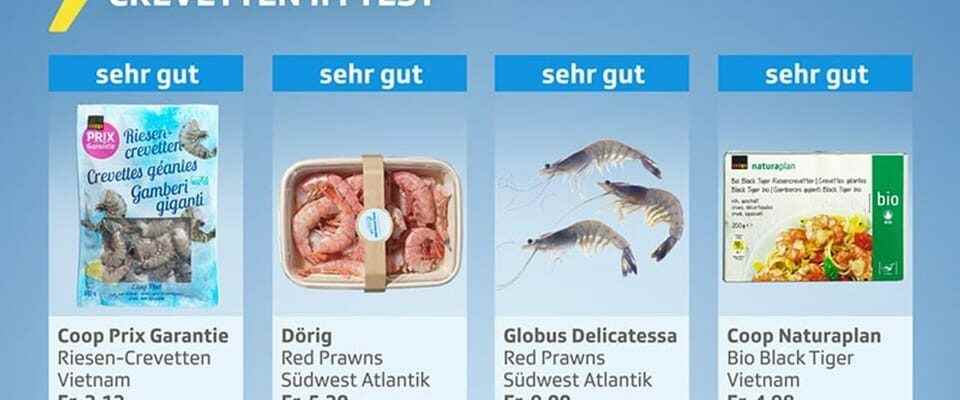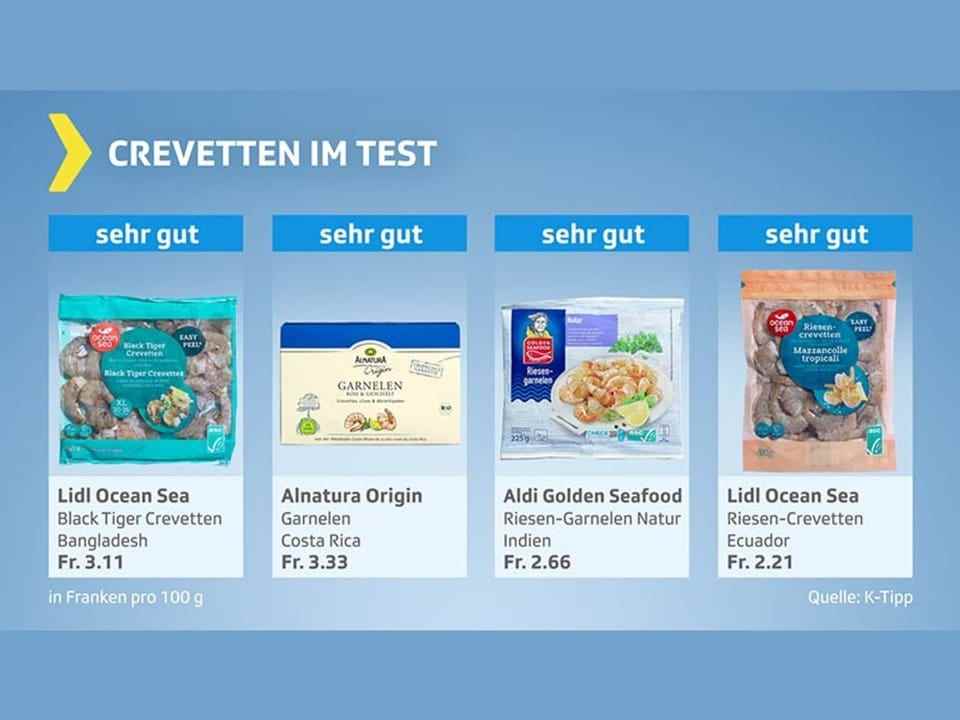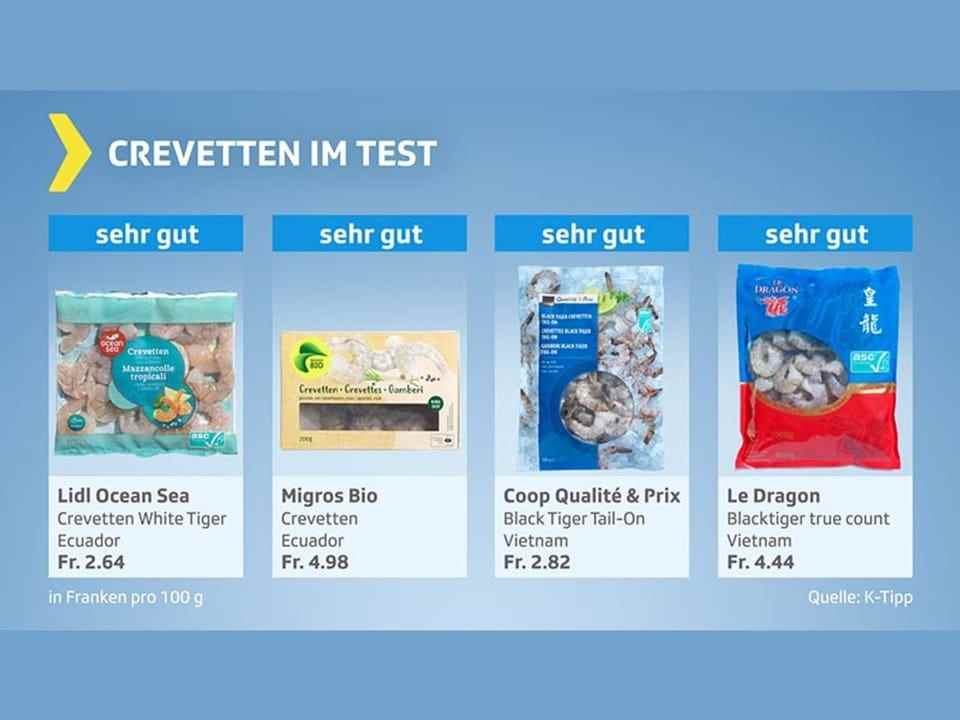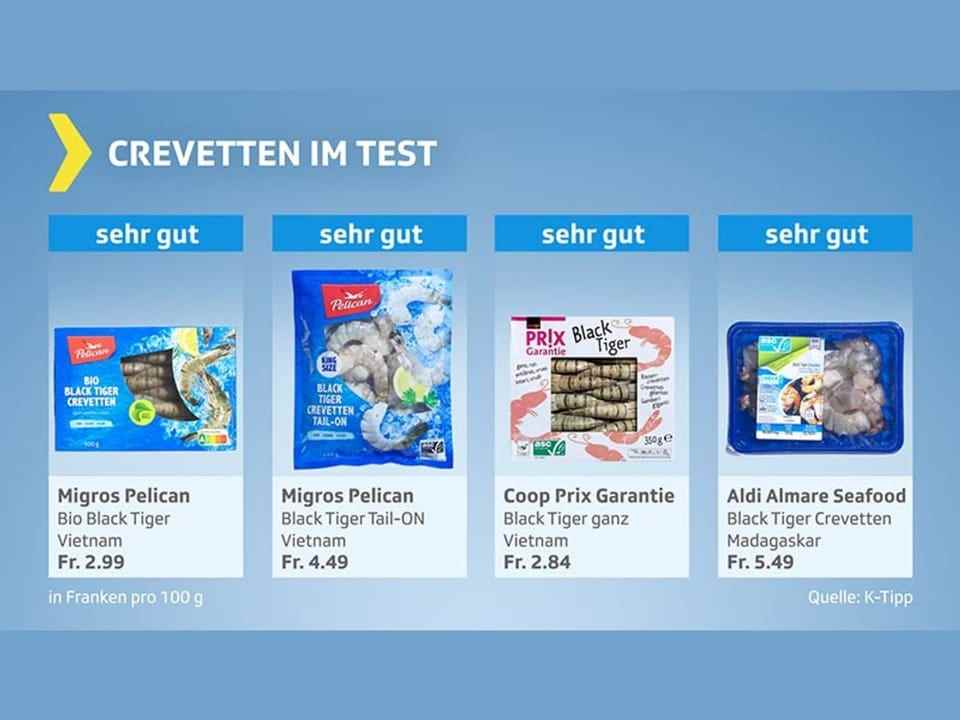contents
In the “Kassensturz” test, 19 out of 20 shrimps from the Swiss retail trade did not contain any antibiotic-resistant germs.
Shrimp have had a bad reputation for a long time. They are mainly fattened up intensively in breeding tanks in far Southeast Asia, with antibiotics often being used – or at least they were. Because the quality of the popular crustaceans in the Swiss retail trade has improved over the years, and the criticism from consumer and animal protection organizations seems to be having an effect.
“Kassensturz” and K-Tipp had 20 frozen shrimp tested for harmful substances and germs in a specialized laboratory. 18 of the samples were rated “very good”. Not only were they free of antibiotic-resistant bacteria, but also of pathogenic germs such as salmonella, listeria, staphylococci, pseudonomads and coliform bacteria. That means: The products are fresh.
overview
Only one product insufficient
Only the shrimps from M-Budget were “inadequate”. The laboratory found antibiotic-resistant germs and an increased level of chlorate. Antibiotic-resistant germs are of concern because they can be transmitted to humans if they are not prepared properly and antibiotics could be ineffective in the event of a subsequent infection. Chlorate is used for disinfection, but high doses can lead to iodine deficiency in the body. Overall, however, the amount of chlorate found was harmless.
The shrimps from Aldi’s Golden Seafood also had an increased chlorate value and were therefore only rated as “sufficient”.
Despite good quality, sometimes questionable production conditions
About half of the 8,445 tons of prawns imported annually comes from Vietnam. “Kassensturz” wanted to visit conventional breeding farms and show how production conditions have changed in recent years.
But despite intensive efforts, the “Kassensturz” reporter was only allowed to see model companies that do not use chemicals or antibiotics and that protect the environment in particular. At one processing plant, the manager explained that consumer pressure had changed his business. The use of antibiotics is much more strictly regulated today, and customers are increasingly demanding products with labels such as ASC, which defines a minimum standard for animals and the environment.
Meanwhile, research continues into sustainable, but still profitable production. In breeding tanks with closed water circuits and biofilters, for example, the density of the shrimp stock can be increased while at the same time preventing pollution of the environment, the responsible dean of a Vietnamese university for aquaculture and fisheries told Kassensturz.
The better controlled the shrimp production is, the better for customers and the environment, agrees Catherine Vogler, seafood expert at WWF Switzerland. Because every type of production has its own problems. It is therefore certainly good advice to pay attention to a good label. And then: limit consumption – less is more.




